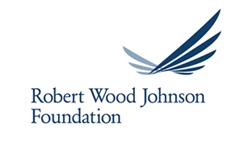Our own fingerprints are on the knife if nothing changes in Washington [1]
The latest Allstate/Atlantic Media Heartland Monitor Poll reports: 88 percent of Clinton voters and 96 percent of Trump voters identified Washington as a problem. 95 percent of Republicans said the political system in Washington is not working well enough, so too did 83 percent of Democrats. Americans think the most serious issue facing the country is “the political system in Washington is not working well enough to produce solutions to the nation’s problems.”
The poll also shows more Americans believe the federal government is “most likely to provide solutions” to that challenge, outpacing state and local governments, big business or national corporations, local businesses, community or non-profit groups, and individuals. [2] It sounds hopeful… maybe too much so.
The problems in DC are not from something amiss in the water of the Potomac. We stab ourselves and kill change making by the confluence of three major forces: Our personal echo chambers of news in a digital world, professional/political self-interest, and money in elections.
In three part harmony, here goes:
First, echo chambers… Opinions different for our own are now conveniently avoidable entirely! More than seven-in-ten U.S. adults follow national and local news somewhat or very closely – 65% follow international news with the same regularity. Fully 81% of Americans get at least some of this news through websites, apps or social networking sites. And, this digital news intake is increasingly mobile. Among those who get news both on desktop computers and mobile devices, more than half prefer mobile
For those under 40 phones now serve as the primary conduit for news.[3] About a third often get news from social networking sites (32%) and from news websites and apps (34%). Their use of social networking sites for news is higher than among any other age group, while their use of news websites/apps is higher than that of those ages 50 and older. In today’s digital world we get to curate our sources, opting in to what we like, and opting out of what we don’t. My Apple News allows me to pick what publications I like and agree with. Several outlets have been included only because it keeps my heart rate up which is a good thing.
But if I wanted all news could come to my phone from people connected through a social media site who agree with me, and might even like me!
Please see this magnificent article on the problem @ https://www.theguardian.com/media/2016/jul/12/how-technology-disrupted-the-truth
Second, self-interest… as members of any professional association, or special interest group, we must share some responsibility for the mess in DC. Associations have been around since before the nation was founded. They do important and good work in terms of bringing people of like minds together, educating members, advancing research, policing the ranks, holding meetings, and advocating for policies.
FULL DISCLOSURE, as a former executive for a professional organization in DC, I learned (the hard way “The primary purpose of any association is to prevent change unless it is to the direct benefit of the interested parties.”
Associations and special interest groups constitute the third largest employment sector in Washington DC, the raw numbers are overwhelming.
The estimate of registered lobbyists in Washington is 10,000, or 18.7 for every elected member of Congress. Special interest and association employment numbers are around 150,000, or 280 people per member of Congress, and all are employed to prevent change unless it is a change to our benefit.
An emerging complication is the ever hardening of interest group perspectives. It is common to hear people visiting DC to lobby express the following: “Anyone who disagrees with us is the enemy.” One unpublished study found Hill staff felt the advocacy approaches of gun rights and gun control organizations were identical “do what we want, or we will crush you in the next election.” No question, the lack of civility in public life is evident every day, at every level, in this election year. However, we can each take steps to acknowledge other human beings in how we listen to, and respect, those who hold an opinion different from our own. But that would mean change.
Third, money… This election is already the most expensive in our nation’s history.
Interest group contributions to campaigns in the 2015-2016 so far total $1,310,372,936. “Outside” spending for the same period is $331,163,840.[4]
Top lobbying groups kicked in $78,710,838 over the first five months of this year[5] and we still have 100+ days to go.
Buckley v Valeo and Citizens United v. FEC have had a major impact on elections and on democracy. They opened new avenues for raising money for causes and for candidates.
However, raising money for re-election has been the first job of our elected officials for more than two decades.
John Oliver did a fascinating story on Congressional campaign funding earlier this year (worth viewing). In it he reported on a Democratic Congressional Campaign Committee memo laying out the expectation for members to spend four hours a day (not in their congressional office but off site in nearby DCCC cubicle) making fundraising phone calls.
Every “retiring” member of Congress lists “the endless chase for campaign funds” as a major reason for leaving office.
In 2015, the House met for 157 days, the Senate met but we really aren’t sure of how many days due to a trick of the rules of recess vs. adjournment. If you see Senator McConnell you can ask him.
It is safe to say both houses averaged 18 hours of work per week. Then they fly home to raise money… from people who know what is true from those they know and agree with… and those who are confident their perspective is the right one.
So should we just give up on democracy/oligarchy? Are we doomed to the raw physics of the influence industry? Should we begin investing in state legislators who might someday be elected to serve in Washington?
Recognizing my need (and the opportunity) to work on openness to differences over the next two weeks, here are the three things I am trying, and invite you to join me.
1) For 30 minutes on three days tuning in to the convention(s) in progress, and listening to people I don’t agree with. This is not to re-enforce biases, but rather to hear people who believe their own truth. Be respectful of their fears and anxieties. Try out some empathy and compassion.
2) Add AlterNet, or RedState to web reading .
3) Make a contribution to a Food Bank equal to the cost of two tickets (including 3D surcharge) to whatever blockbuster movie is playing in an air-conditioned theatre. (See BFG if you still can.. it was amazing).
It might just help me feel better and more hopeful about the future. Respect for every voice makes a difference, even if that voice is not in harmony with my choir.
Let me know what you think/learn in the process! Thanks for the feedback so far!
[1] Borrowing from: How come every time I get stabbed in the back my fingerprints are on the knife? : And other meditations on management., Jerry B. Harvey, San Francisco : Jossey-Bass,1999.
[2] How Can The US Fix a Broken Government, The Atlantic, 7/16/16, Clare Foran.
[3] The Modern News Consumer, Pew Research , 7/7/16, Amy Mitchell, Jeffrey Gottfried,, Michael Berthel, Elisa Shearer.
[4] The Center for Responsive Politics. SourceFEC 6/27/16 and 7/16/16 THE CENTER IS A TREASURE TROVE
[5] http://www.senate.gov/legislative/lobbyingdisc.htm#lobbyingdisc=fec, not a treasure trove, requires hours to do what OpenSecrets.org does in seconds.



























